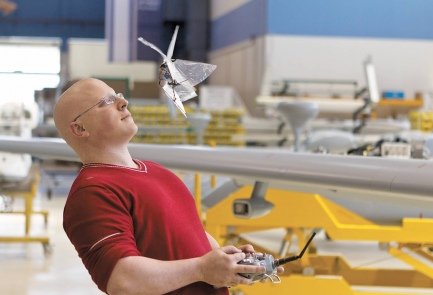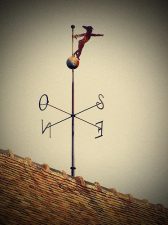Biomimicry is one of the smartest contemporary approaches to design, so it was inevitable that Israeli researchers would apply this science to their military designs. Like the Iranian home that mimics a snail’s form in order to stay cool and a bottle inspired by the Namib desert beetle that can harvest water in one of the driest places on earth, Israel Aerospace Industries’ (AIA) latest insect drone, their smallest to date at only 20 grams, takes its intelligence, form and other properties from one of nature’s finest creatures: the butterfly.
An indoor butterfly
The Butterfly drone can perform tricks that have never before been achieved by a surveillance device. It can fly indoors, thereby enabling covert information gathering during meetings inside buildings, at train stations and other public buildings as well as outdoors, and it is equipped with a tiny 0.15 gram camera that takes color photographs.
The camera is controlled remotely with a helmet that provides a butterfly’s-eye-view.
Another unique attribute is the drone’s ability to take off vertically and hover in flight, like a helicopter, but its most impressive feature, says Dubi Binyamini, head of IAI’s mini-robotics department, is the butterfly’s ability to fly in an enclosed environment.
“There is no other aerial vehicle that can do that today,” he told Israel Hayom.
Drone butterfly trumps nature
Trumping real butterflies that flap their wings anywhere from 5-12 times a second, the drone flaps its wings 14 times a second, and makes virtually no noise. This combined with its near translucence enhances its near-invisibility.
While we have no real comment about the military benefits of this design (we are peace-loving greenies after all), we are excited that nature once again proves its might and here’s how: when they tested their mechanical butterfly at a height of 50 meters, AIA researchers discovered that birds and flies fell behind the drone, further improving its disguise.
Although they expect to spend another two years perfecting the project, AIA believes that their hovering butterfly drone will spur a “real technological revolution.”
Photo: Israel Hayom
More Biomimicry Stories on Green Prophet:
Inspired by Nature, Water Tips for the Middle East
What Camels and Scorpions Teach Dayma Tourists in Egypt
Curvy Desert Home Designed by Iranian Students Mimics the Snail




